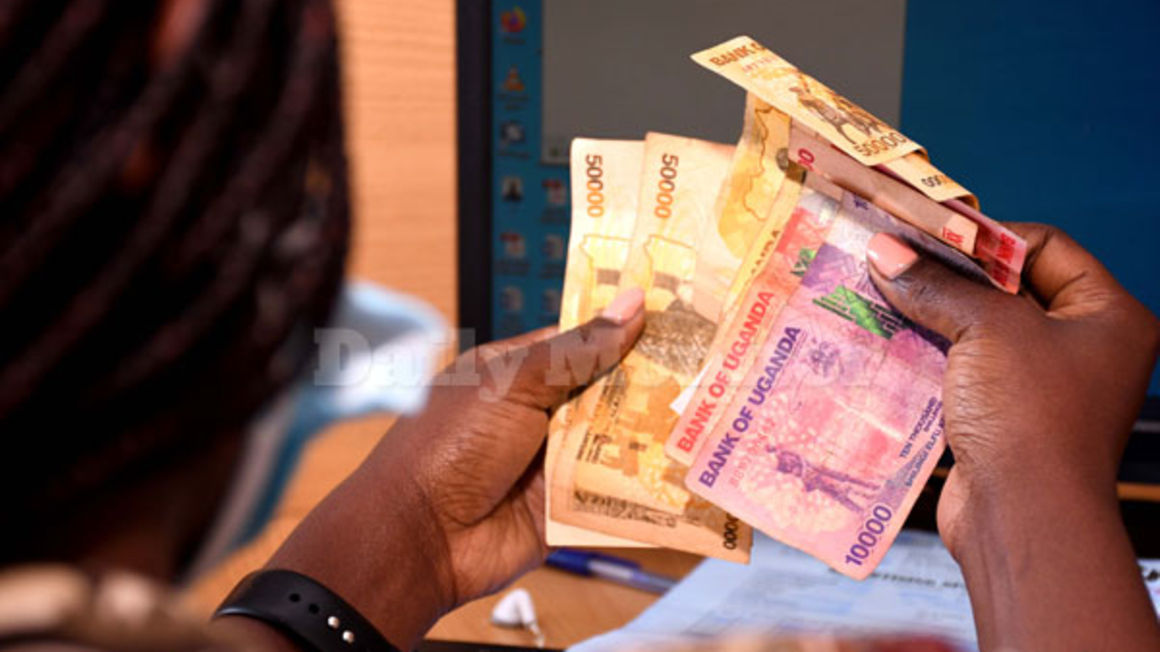
Commercial banks have since April last year borrowed about Shs155b from Bank of Uganda emergency provisions to shore up their operations impacted by Covid-19 . PHOTO/RACHEL MABALA
Money borrowed by commercial banks from Bank of Uganda (BoU) to shore up operations and shortages caused by Covid-19, has increased by Shs45b in the quarter ended April, according to details from the Central Bank.
Data contained in the June Bank of Uganda Monetary Policy Statement, indicates that commercial banks have so far borrowed Shs155b from emergency provisions up from Shs90b for the period ended September 2020.
The money, among others, seeks to shore up commercial bank operations that are facing liquidity and functional challenges.
However, the Central Bank does not offer details of which banks have accessed the funds or how much was lent out to respective banks.
In September 2020, in its Financial Stability Review for the period ended June last year, the Central Bank said three banks, which it did not name, had sought funding of up to Shs60b from the Covid-19 Exceptional Liquidity Assistance Facility and the Lombard Window to shore up their operations.
The two facilities have since April 2020 been used by Bank of Uganda to provide emergency funding to banking institutions that have had challenges due to Covid-19-related shocks.
In April last year, the Central Bank established emergency liquidity assistance measures, in which it sought to shore up capital and funding gaps among some supervised financial institutions whose operations had been affected by Covid-19.
In notes published in the June 2021 Monetary Policy Statement, Bank of Uganda Governor Emmanuel Tumusiime Mutebile, said the liquidity support measures seek to stabilise market operations, noting that the support had helped to stabilise bank-to-bank interest rates that had been threatened by Covid-19 related shocks.
Interbank rates, which is the interest charged on short-term loans between banks, had remained broadly stable, and anchored around the Central Bank Rate (CBR) in the quarter to May 2021, which has now been reduced to the lowest ever - 6.5 per cent – since it was introduced in 2011.
For instance, the Central Bank said, the seven-day interbank rate had remained stable, averaging at 7.3 per cent over the period with stability noted in all short-term money market rates during the quarter ended April.
The Central Bank has since April 2020, put in place measures, among them reduction of the CBR as a way of supporting the economy to withstand Covid-19-related shocks and encouraging commercial banks to lend out money to the private sector at reasonable rates.
However, commercial banks have been less responsive, keeping interest rates above 118 per cent for prime customers and 21 per cent for regular or high risk borrowers.
Last year Mr Mutebile warned commercial banks, threatening to cap interest rates after almost all banks had ignored movements in the CBR, which had been lowered to support economic recovery and credit extension.
Measures to support the economy
The
Central Bank has since confirmation of the first case of Covid-19 in
March 2020 put in place a raft of actions, among which include credit
relief measures, liquidity support and suspension of dividends, bonuses
and discretionary payments, to preserve money to support real growth.
However, the economy has remained subdued and is being threatened by the second Covid-19 wave, which has since the beginning of May created devastating havoc on the country’s healthcare system.
Credit access has also remained a challenge, exacerbated by an increase in banks’ risk averseness with commercial banks opting to invest in government debt through Treasury Bills and Bonds.
During the period ended April, the Central Bank noted, the value of loan applications had increased, suggesting a recovery in demand but approvals fell, which points to risk aversion and unfavorable financial conditions, among applicants.
Both shilling and foreign currency loans recorded an increase with shilling-denominated interest rates averaging at 18.9 per cent while foreign currency denominated interest rates rose to 5.9 per cent for the period ended April.




No comments :
Post a Comment